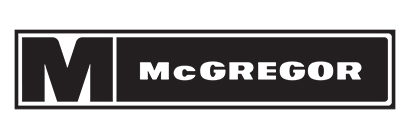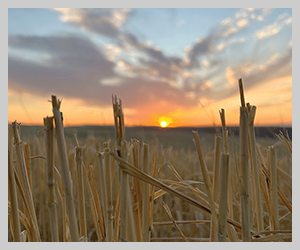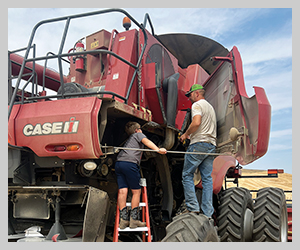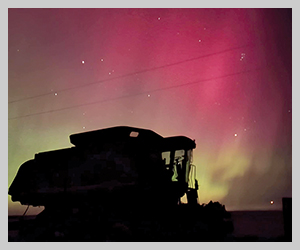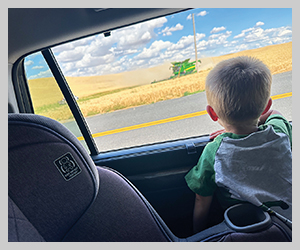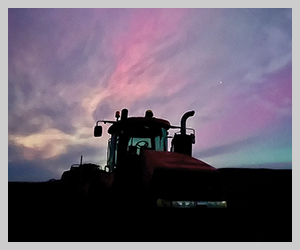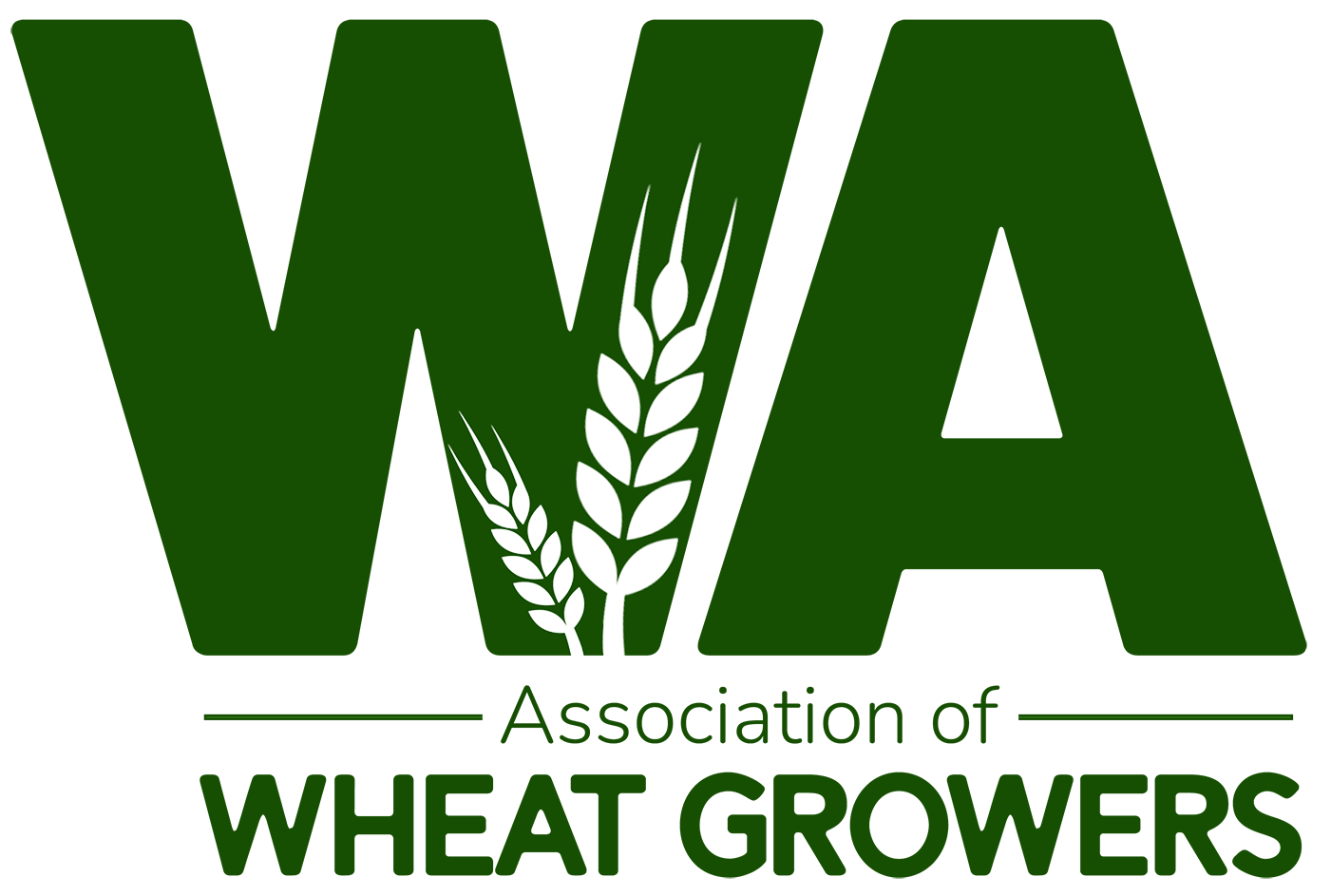Working the waterways Columbia-Snake River System users tour Mississippi River
2024August 2024
By Trista Crossley
Editor

At the end of June, a group of Columbia-Snake River System stakeholders returned from a tour down the Mississippi River impressed with the need for collaboration among all U.S. river systems and a reminder of how much of the nation’s commerce relies on these river highways.
“While there are many differences between our two river systems, we also have a lot in common, especially how important each waterway is in moving inputs upriver and products downriver for export,” said Michelle Hennings, executive director of the Washington Association of Wheat Growers (WAWG). “It was very educational to see how stakeholders on the Mississippi River navigate funding for infrastructure, balancing the different sectors that use the river, such as recreation and industry, and how they operate despite wildly fluctuating water levels.”
Joining Hennings on the trip were Rob Rich, vice president of marine services for Shaver Transportation; Anthony Peña, government relations manager for the Pacific Northwest Waterways Association; Kristin Meira, director of government affairs for American Cruise Lines; and Captain Jeremy Nielsen, president of Columbia River Pilots. Gary Williams, executive director of the Upper Mississippi Waterway Association (UMWA), and Jeremy Putnam, president of UMWA, helped coordinate the trip and traveled with the group.

The trip began in La Crosse, Wis., at an UMWA meeting. The Pacific Northwest group gave a presentation and talked about the challenges facing the Columbia-Snake River System, in particular, the controversy over the lower Snake River dams. The next stop was Memphis, Tenn., where the group toured an American Cruise Lines vessel and learned about the river cruising industry, which is growing exponentially. From Memphis, the group headed to Vicksburg, Miss. After a tugboat ride, they visited the U.S. Army Corps of Engineers’ Engineer Research and Development Center to see how the agency uses simulations to design channel infrastructure and train pilots. The tour ended in New Orleans. The group had the opportunity to visit St. Bernard Port, Harbor, and Terminal District, the Port of South Louisiana, and one of Cargill’s terminal facilities.
An UMWA delegation is planning to visit the Pacific Northwest next summer to get a look at the Columbia-Snake River System.
“I look forward to more collaboration and exploring ways for the users of both systems to work together,” Hennings said.
Common threads
Throughout the tour, a number of common threads between the two river systems emerged, including the need for public education and awareness of the value of working rivers. Putnam explained that people often underestimate the economic and environmental impact these vital waterways have on everyday life, and future collaboration between stakeholders using facts and data is key to protecting the inland river system as a whole. Williams added that it’s not only the public that needs to be educated, but legislators and the media also need to understand the importance of the nation’s waterways.

“Users on both rivers are realizing that we have to increase the content of facts, frequency, and reach of our message. While the rivers may operate differently and deliver goods to/from different parts of our country and abroad, we need to be telling our river’s story and the other river’s story to our own audiences,” he said. “Other messages without all of the hard facts or regard for actual impacts are being told and adopted as being true by one part of our country about another part of our country. Ill-informed is worse than the uninformed in such instances.”
Throughout the trip, the group talked with people who made their living operating on the Mississippi. While the two river systems are very different geographically, the dedication to safety, efficiency, and the environment by the people working on them is the same, something Meira noted. Another common denominator is federal oversight of navigation infrastructure and the continual need for funding to maintain that infrastructure, including dredging.
“It is important for stakeholders from both river systems to share and compare their experiences when it comes to port facilities, navigation channels, locks, and all the other largely unseen elements that keep our country on the move,” Meira said.
While the group was visiting La Crosse, the upper Mississippi was flooding due to storms. Because many of the dams along that part of the river aren’t used for flood control, facilities along the river have to be built to accommodate both high and low water levels or, in the case of flooding, be able to move equipment to higher ground temporarily. Flooding also impacts river traffic by not leaving enough room for ships to pass under bridges or rendering the locks unusable because of the volume of water.

A “working river”
While the Columbia-Snake River System is big, the Mississippi River System dwarfs it, not only in reach but in the amount of commodities that are moved on it. In the upper Mississippi (generally regarded as above St. Louis), recreation used the river side by side with industry. On the lower Mississippi, however, the river was all business with very little recreation to be seen, except for the cruise ships.
On the lower Mississippi, an average tow is about 30 barges, a size that leaves little margin for error when navigating along the river. Some of the issues the lower Mississippi faces include maintaining the channel, strong currents, and shifting sandbars. Security was a high priority at the ports in New Orleans as a considerable amount of the nation’s fuel is refined there. It was no surprise that hurricane plans are a big priority for the ports in the New Orleans area; what was a surprise was learning that at the Port of South Louisiana, wind tends to do more damage than water. Getting equipment tied down and people moved to safety before a storm is part of the port’s preparation, but finding people once the storm has passed is also important.
“While both systems have similarities in their function as inland waterway transportation corridors, they have dramatic differences in their effects on the local environment, the scale of commodities movement, and the investments and commitments made to these areas by industry and the government,” Peña said.
At the St. Bernard Port, Harbor, and Terminal District in New Orleans, the group donned hard hats and life vests for an Associated Terminals’ tugboat ride to see the equipment used for midstream cargo handling, something that isn’t utilized in the Pacific Northwest. With barges lining both sides of the river and a continual stream of cargo ships and tugboats passing by, it was easy to understand why it was referred to as a “working river.”
“My biggest take away from the trip was how highly dependent that system is on barging vs. rail at the big downriver terminals,” Rich said. “Also, the sheer immensity of the volumes and facilities are just incredible. That system is not only functioning as a giant export/import hub, but as a distributor of economy-sustaining materials and liquid products to support a vast swath of the nation.”

Reflections on the trip
“This trip was a proactive step towards networking and establishing relationships with stakeholders from other river systems for future collaborations. The reception we received along the tour was overwhelmingly positive, as we all recognized the need to work together to protect our working river systems,” Hennings said. “I was fortunate to travel with capable, knowledgeable PNW leaders that have the skills and passion to represent the Columbia-Snake River System to the fullest.”
“I was impacted on this trip by the enormous value our river transportations systems bring to our nation. The increased costs, not just in terms of money, but in congestion, pollution, road maintenance, safety and reduced efficiencies if we were to abandon our river transportation systems must be staggering,” Nielsen said.

“WAWG and UMWA provided the most in depth and comprehensive shared interaction with this region that I have ever experienced,” Rich said. “I learned more in our six days about the differences and commonalities in our systems than I could have imagined.”
“I was honored to get an inside look at some of the operators and port facilities on the mighty Mississippi,” Meira said. “It was wonderful to have the chance to share one of our vessels with this group as well. I look forward to more opportunities to partner with fellow river stakeholders.”

“Our journey to the Mississippi River System was an eye-opening experience that highlighted both the similarities and stark differences between our river systems,” Peña said. “While both serve as vital inland waterway transportation corridors, we observed dramatic contrasts in environmental impact, scale of operations, and levels of investment. This exchange underscored the importance of cross-regional collaboration and knowledge sharing. By understanding each other’s unique challenges and innovative solutions, we can work together more effectively to advance and protect our nation’s diverse river systems. This trip reinforced my belief that open communication and mutual learning between different river communities are critical to ensuring the long-term sustainability and prosperity of America’s waterways.”
“This trip marks a new era of collaboration for UMWA and our waterways. We’ll share ideas, address challenges, and ensure our rivers thrive for generations to come,” Putnam said.
“The exchange trip represents the start of a much more determined effort by users to exchange ideas, issues, opportunities, on bettering the very important working waterways,” Williams said. “Whether it be on how to foster careers to be sought in the inland maritime industry, tailoring our information message to the public, ideas on how to utilize the advantages of our river systems for growth and reduced environmental impact, and ensuring our local, state, and national legislators understand the importance of addressing the needs of our waterways — we have much to lend, support, and learn from one another.”

See what happened along each step of the trip:


